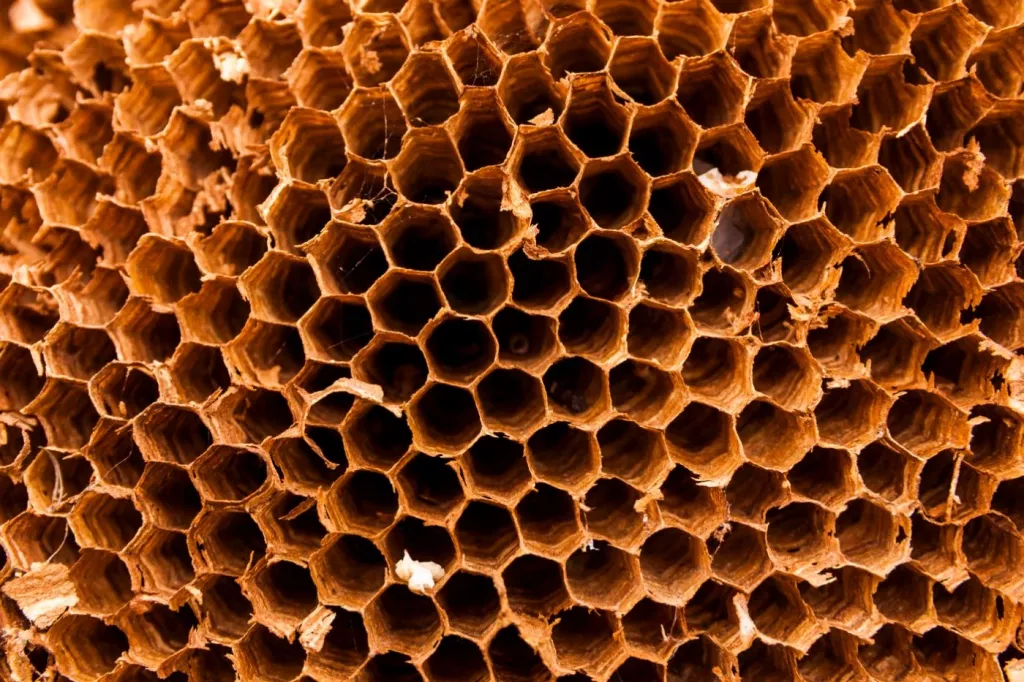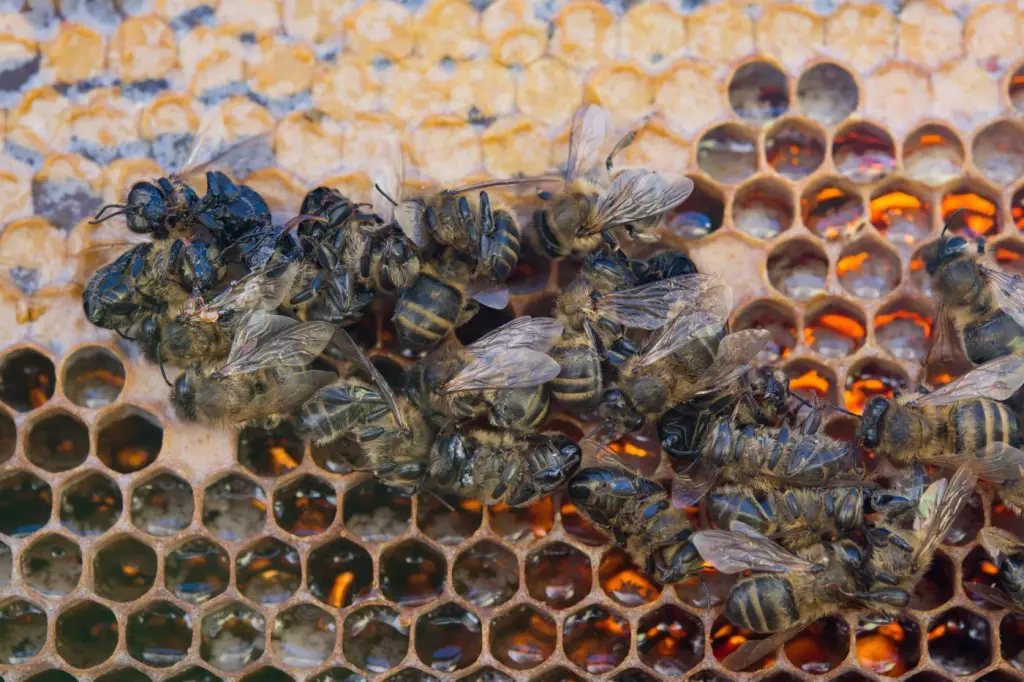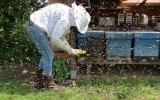When To Treat Your Hive for Mites - Timing is Everything
For your bees to continue thriving, monitor and treat your hive for mites. These pests can cause severe problems for the colony and can even lead to its death. However, the question is: when is the time right to treat your hive? How do you know if your hive is infested, and how often should you treat it? Let's get into the details.
Most beekeepers would treat the mites around August, when the colonies are at their peak population, and in the middle of winter, when mite populations are at their lowest. The goal is to reduce the mites before the colonies enter their winter dormancy and weaken, as this would give them the best chance of surviving to see another season.
It is essential to keep an eye on your hive and watch for signs of mite infestation. If you notice an increase in the number of mites, then it is time to start treatment. At the same time, you should also make sure to check for any visible signs of mite damage, such as webbing or dead larvae.
Summary

On this page:
Which Season Is Best For Mite Treatment?
Treating the hive for mites in late summer or early fall is recommended. Although it may not be the same for everyone, it would depends on whether you're from the North or South and the climate in your area.
This is where timing comes into play, as there are certain times when the mites will be most active and in more significant numbers. The peak activity for hive mites is usually during the spring and early summer months, so it's essential to treat the hive then. This keeps you on your goal to make sure that the queen gets to lay eggs, and that the hive is healthy throughout the season. In addition, during dead winter when it's going to be the coldest, you may want to treat the hive for mites once again.
At the same time, it’s important to note that there is no one-size-fits-all solution for mite treatment. Different hives and colonies may need to be treated at different times depending on the number of mites and other environmental factors.
A great tip is to check your queen to see if she is laying eggs. If she isn't, then it may be time to treat the hive for mites. Likewise, keep a close eye on the mites and other pests that may be present in the hive. This will give you a better guide on when to treat the hive.
Also, always remember to maintain good hygiene and keep your hives clean. This will help you eliminate the potential of mites and other pests entering the hive in the first place.

How Often Should You Treat for Mites?
Treating your hives for mites every three months or so is recommended. This will help ensure that the hive is maintained in top condition and that those mite populations are kept under control. However, this may vary depending on the needs of your hive, the number of mites present, and other factors.
Treating too often can reduce the effectiveness of treatment, while not treating enough can lead to an infestation that can harm the health of your hive. So, it is vital to find the best balance for your colony and to keep a close eye on any changes in the hive.
Generally, three times a year can be a good rule of thumb for most beekeepers. However, it is ultimately up to you to decide the best treatment schedule for your hive and ensure that it is properly taken care of.
Also, keep in mind the state of the bees, specifically the queen bee, if she is laying eggs or not. If she isn't, then it may be time to treat the hive as well as keep an eye on the mite population. Many beekeepers swear by this schedule and find that it works best for them. You can search for further advice from other beekeepers to get an idea of what works best for them.

What Are the Factors to Consider When Treating for Mites?
When considering mite treatment, there are several factors to take into account. This includes the size of the hive, the mite population, and even the weather conditions. Let's break it down further:
Size of the Hive
The size of the hive will determine how much mite treatment is needed. A larger hive may require more treatment than a smaller hive, as the mites can quickly become out of control and harm the health of the colony.
Some guidelines can help you determine how much treatment is needed, but in the end, it comes down to some trial and error.
Type of Mites
The type of mites present in the hive will also play a role in determining how often you should treat them. Varroa mites are the most common and they can quickly become a problem if left untreated. However, other pests may also be present in the hive that require different methods of treatment.
Another type is the tracheal mites, which are harder to spot and require more frequent treatments. These microscopic parasites usually live inside tracheae found in the bee's body and can cause significant damage if left untreated.
Each type of mite present will also have different requirements for treatment, so it is crucial to keep an eye on the situation and use the appropriate treatments. Getting to know each symptom is key to successful mite treatment.
Weather Conditions
The weather can also affect how often you need to treat mites. If the weather is warm and damp, mites may reproduce faster than usual. This will require more frequent treatments to keep them under control. On the other hand, if the weather is cold and dry, mites may reproduce more slowly, meaning you won't need to treat them as often.
Having a set schedule for when to treat your hive is important, but it is also wise to be flexible and adjust treatments if needed. This will help you keep mite populations under control and ensure that your hives are healthy and productive.
Environment
Finally, the environment in which your hive is kept must also be taken into consideration. If other hives near yours have yet to be treated for mites, this could quickly spread the infestation to your hive.
It is important to be aware of your environment and make sure you take steps to limit the spread of mites. Keeping your hives separate from other untreated hives and monitoring the situation can help prevent mites from becoming a problem.
Why Should Mite Treatments Be Done Regularly?
Mite treatments should be done regularly to help keep your hive healthy and productive. Mites can quickly become an issue if left untreated, so it is important to keep an eye on the situation and treat it as needed.
By treating mites regularly, you can limit their impact on the health of your hives and prevent them from spreading to other colonies. Regular treatments also help to reduce the risk of pests and diseases, which can have devastating effects on hive health.
So, when it comes to mite treatment, it is important to stay on top of the situation and make sure you are regularly treating. This will help ensure that your hives remain healthy and productive and will help you keep mite populations under control.
The best way to treat mites is with an integrated pest management approach. This involves using a combination of cultural, biological, and chemical methods to control mites. This gives you the best chance of success in eliminating mites while also reducing the risk of harming other beneficial insects.
How Do I Treat My Hive for Mites?
When it comes to treating a hive for mites, the most important thing is to use the right products and apply them correctly. There are several products available for mite treatment, depending on the type of mites you have. These products contain chemicals that are designed to kill the mites without harming the bees.
Searching for the right products and reading reviews from other beekeepers can be a great way to ensure you are using the right products for mite treatment.
Once you have the right products, it is important to follow the instructions carefully and apply them correctly. This will help ensure you get the most out of the treatments and protect your hive from further mite infestations.
Overall, treating mites can be a tricky task, but with the proper knowledge and products, you can help keep your hive healthy and productive. Adequate monitoring and treatments can protect your hive from mites and ensure it remains a healthy and vibrant part of your beekeeping journey.

